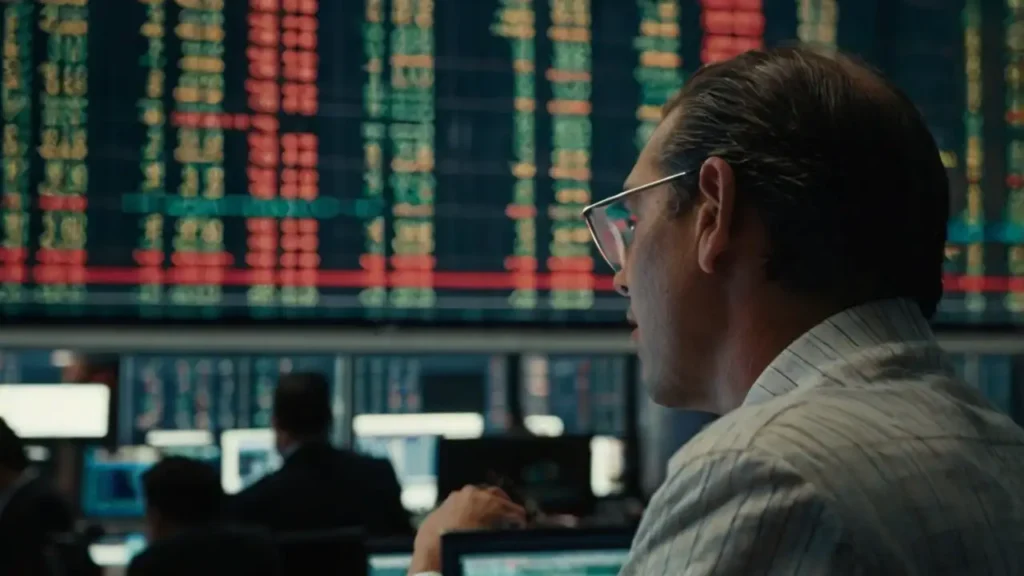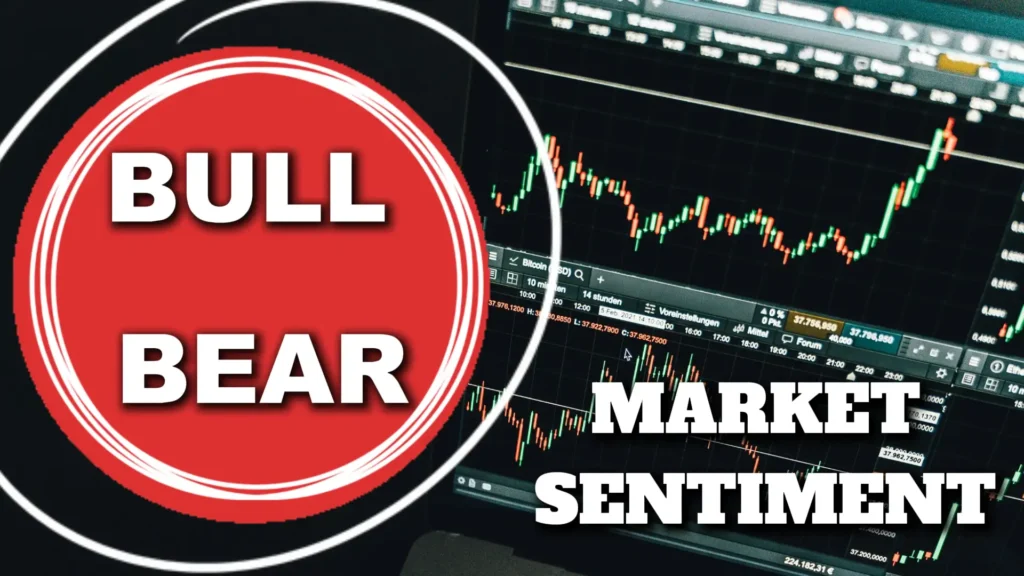Why do stocks rise when news looks bad? Why do they fall when numbers look strong? The answer is not always in profits, revenue, or balance sheets. The answer is market sentiment. It is the invisible force that moves prices when logic alone cannot explain the swings.
Market sentiment is the overall mood of investors. It shows if people feel confident or worried. This mood drives demand and supply. Demand and supply drive price. You may have the best research and still lose money if you ignore sentiment. That is why traders and investors must track it. If you know the mood of the crowd, you gain an edge.
Think about this. A company posts strong earnings. Yet the stock drops. Why? Because the market expected more. Expectations are built on sentiment. When the crowd feels the stock should soar, anything less than perfect results disappoints. That is the power of sentiment.
Building the Layers of Market Sentiment
Market sentiment is not a random guess. It is something you can read through clear signals. These signals build a picture of the market’s current mood, piece by piece. The more signals you track, the sharper your view of the crowd’s thinking becomes. Let us break them down step by step.
News and Headlines
News is the fastest mover of sentiment. It can change the market’s mood in minutes. When headlines point to strong job growth, low inflation, or rising profits, traders feel encouraged to buy. When reports warn about weak earnings, rising interest rates, or political tension, traders hesitate and sell.
But here is the deeper truth: it is not just the news itself that matters. It is how the crowd reacts. Sometimes a negative report does not hurt prices because investors expected worse. Sometimes strong news does not lift prices because the crowd already priced it in. The gap between the headline and the reaction reveals the true mood of the market. If good news brings no gains, that means optimism has already peaked. If bad news does not drag prices lower, it means confidence is stronger than fear.
This is why professional traders do not stop at reading headlines. They measure the reaction. The reaction tells the real story.
Price Action
Charts are the clearest mirror of sentiment. Every move in price shows what buyers and sellers feel. A steady rise in price means confidence is building. Each dip that quickly recovers means buyers remain in control. When prices fall with no bounce, it shows sellers have the upper hand.
But it is not just about direction. The speed and size of moves add more detail. Sharp jumps in price show excitement. Slow, steady gains show calm confidence. Sharp drops show panic. Long slides show deep worry. The way prices move tells you how strong the mood is.
Patterns on charts also show shifts in sentiment. Breakouts above past highs show traders believe more growth is coming. Breakdowns below past lows show fear has taken over. Price action does not lie. It captures the crowd’s emotions in real time.
Trading Volume
Volume is the fuel behind every price move. It shows how many traders are active and how much conviction they have. High volume with rising prices signals strong bullish sentiment, meaning buyers are confident and eager. High volume with falling prices signals strong bearish sentiment, meaning sellers are aggressive and fearful.
Low volume tells a different story. It shows hesitation, doubt, or lack of commitment. Traders are watching but not acting. That silence can be powerful. It means the market is waiting for a trigger. When that trigger comes, volume can surge and push prices hard in one direction.
Reading volume gives depth to price action. Price shows where the market is moving, but volume shows how strong that move is. Together, they reveal if sentiment is real or weak.
Indicators and Indexes
Beyond price and volume, traders use tools built to track sentiment directly. One of the most watched is the VIX, known as the fear index. When the VIX is high, fear dominates the market. Investors worry about risk and sell. When the VIX is low, calm confidence takes hold, and money flows in.
There are also sentiment surveys. These ask traders and investors how they feel about the market. If most report bullish views, optimism is high. If most report bearish views, pessimism is widespread. These surveys do not move prices by themselves, but they measure the crowd’s mood.
Other indexes track specific groups, such as small traders, professionals, or fund managers. By comparing these groups, you can see who is leading and who is lagging. These insights sharpen your understanding of the overall mood.
Social Media and Forums
In the past, newspapers and television were the main drivers of sentiment. Today, posts, tweets, and online forums can move stocks within minutes. A single viral comment can spark excitement across millions of traders.
Online communities have the power to create waves of enthusiasm or panic. The “meme stock” rallies proved this. Stocks with weak fundamentals shot up simply because crowds on forums pushed them. At the same time, negative chatter can crush a stock as fear spreads.
This is why many traders now track social chatter as carefully as charts. It is raw, fast, and sometimes chaotic. But it reveals emotion in real time. That raw emotion is the essence of market sentiment.
Why Sentiment Matters to You
You might ask: why not ignore mood and trust numbers? After all, numbers seem solid while feelings seem vague. But here is the problem. Numbers move slowly. Reports come once a quarter. Forecasts update once a month. By the time the numbers confirm a trend, the move may already be over.
Sentiment moves fast. It reacts in hours, sometimes in minutes. A company’s profit may rise 10% in a year, yet its stock can fall 20% in a week if fear takes hold. That sudden drop does not come from balance sheets. It comes from panic. Ignoring sentiment means you miss what moves price now.
Here is the payoff. If you learn to spot sentiment early, you get ahead of the crowd. Traders who saw the fear building in 2008 pulled out before the crash deepened. Investors who noticed confidence returning in 2009 bought at low prices and enjoyed years of gains. Spotting mood swings does not just protect your money. It creates opportunities.
Think about how this applies today. When sentiment turns too optimistic, stocks become overpriced. That sets up risk. When sentiment turns too pessimistic, stocks become undervalued. That sets up reward. By tracking mood, you can see both danger and opportunity before the numbers show them.
How to Use Market Sentiment
Now we come to the heart of the subject. Knowing sentiment is one thing. Using it is another. Many traders spot mood shifts but fail to act correctly. The real edge comes from turning sentiment into clear steps. Here is how you can do it.
Confirm With Data
Do not rely on mood alone. Sentiment can mislead if it is not backed by facts. A bullish crowd with no earnings support may create a bubble. A bearish crowd with strong earnings in place may create a buying chance. That is why you must confirm mood with numbers.
For example, if sentiment is positive and earnings, sales, and growth also support it, the trend has strength. That is where you ride along with confidence. If sentiment is positive but the numbers are weak, that rally may be short-lived. By checking both sides, you avoid being fooled by short-term hype.
Trade With the Crowd — Until It Turns
In strong trends, go with the crowd. Bullish mood drives prices higher. Bearish mood drives prices lower. Fighting the crowd too early drains money fast. But here comes the key: crowds do not move forever.
When sentiment reaches extremes, the trend may reverse. Too much greed leads to a top. Too much fear leads to a bottom. Spotting those extremes gives you entry and exit points. Instead of being trapped, you turn crowd emotion into your advantage.
Manage Risk at All Times
Sentiment can change fast. A new headline, a policy change, or a sudden shock can flip the market in minutes. That is why risk control is not optional. Use stop losses to protect your trades. Keep position sizes safe. Diversify so one wrong move does not destroy your account.
The goal is not to predict every swing perfectly. The goal is to stay alive long enough to ride the right ones. Risk control is how you do that.
Learn From Past Cycles
History shows that sentiment runs in cycles. Fear builds, peaks, and then fades. Confidence builds, peaks, and then fades. The dot-com bubble, the 2008 crash, the 2020 pandemic crash, and the meme stock frenzy — all are examples of sentiment cycles.
By studying these past events, you train your eye to spot the signs. Each cycle looks different, but the emotions behind them are the same. Knowing this gives you clarity in the present.
Protect With Risk Control
Sentiment can shift without warning. A single headline, a policy change, or a sudden global event can flip the market’s mood in minutes. That is why risk control is not optional. It is the safety net that keeps you in the game when the crowd turns against you.
Use stop losses to cap potential losses before they grow. Set clear rules for how much of your money you put into each trade. Keeping position sizes safe prevents one bad move from wiping out your account. Always plan for sudden turns instead of assuming the current mood will continue. Traders who survive market storms are not the ones who always predict right. They are the ones who protect their capital.
Learn From History
Sentiment runs in cycles. Confidence rises, peaks, and then breaks. Fear rises, peaks, and then fades. These cycles show up in every major market event. The dot-com bubble was driven by extreme optimism. The 2008 crash was driven by extreme fear. The recovery after each event came when sentiment reached its breaking point and reversed.
By studying past booms and busts, you see repeating patterns of greed and panic. While the details of each event change, the emotions do not. This knowledge prepares you to recognize the next cycle. History does not repeat in exact form, but moods return again and again. When you see those familiar signs, you can act with confidence while others get caught in the storm.
Market sentiment is not a mystery. It is the sum of emotions, reactions, and expectations of investors. It drives demand and supply. It pushes prices up and down. Numbers matter, but the mood around those numbers matters more in the short run.
If you want to grow as a trader or investor, you cannot ignore sentiment. Watch the charts. Track the volume. Follow the news. Study the surveys. Pay attention to social chatter. Combine all of this with your research.
Here is the final insight. Sentiment is not your enemy. It is your guide. Use it to understand the crowd, not fight it blindly. When you know the mood, you gain clarity. With clarity, you make smarter choices. And in trading, smarter choices mean better results.




